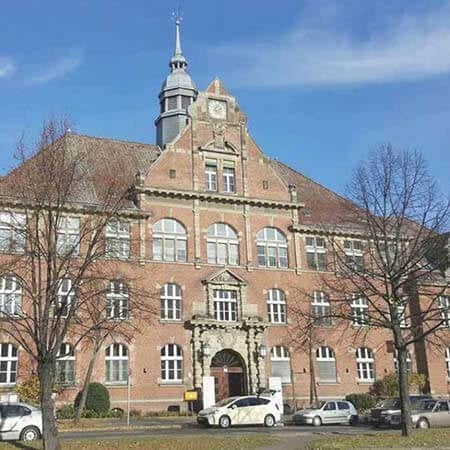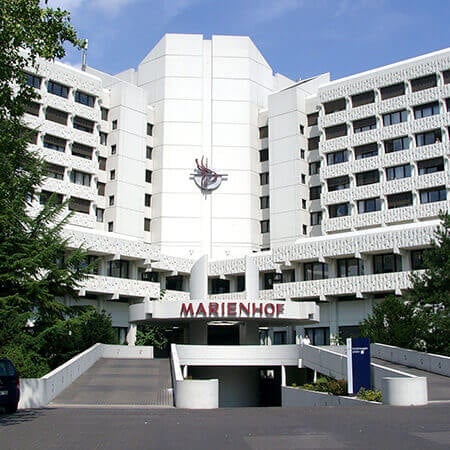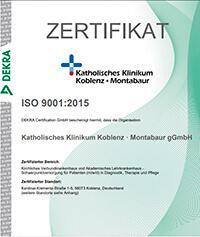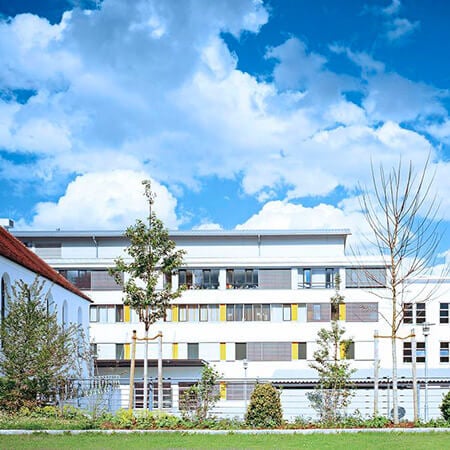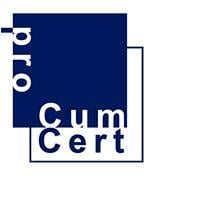Chronic knee synovitis causes pain, swelling, and limited knee mobility. It reduces the quality of life of patients and causes a drop in physical activity. The treatment of the disease abroad may involve the use of both conservative and surgical methods. A surgery to remove the inflamed synovial membrane of the knee can be performed using minimally invasive techniques, namely, with arthroscopy. Some hospitals in Germany use radionuclide treatments to cure synovitis without surgery.
Content
- What is knee synovitis
- Conservative therapy
- Arthroscopic synovectomy
- Other arthroscopy options
- Radioisotope synovectomy
- Why is it worth undergoing synovitis treatment in developed countries
- Treatment in Europe at an affordable price
What is knee synovitis
Synovitis of the knee is an inflammation of the synovial membrane. It lines the inside of the knee joint. The synovial membrane consists of a thin lining layer and a thick subintima. The lining layer (intima) is responsible for the production of substances that form the synovial fluid of the knee joint.
Synovitis can be acute or chronic. Acute inflammation can be associated with a knee injury or extreme physical exertion. This inflammatory process usually subsides over time, even without treatment. Some patients require the help of doctors: prescribing medications, knee joint puncture. But in the end, synovitis completely disappears and does not cause any problems in the future. At least 10% of people experience acute synovitis once in their life.
Chronic synovitis is more dangerous. Constant inflammation of the synovial membrane not only causes pain and disrupts the knee mobility, but over time leads to the destruction of cartilage. As a result, the patient may require knee replacement surgery.
There are more than 200 diseases that lead to the development of knee synovitis, but two of them are the most common. These are osteoarthritis of the knee joint (gonarthrosis) and rheumatoid arthritis. The dominant cause is gonarthrosis, since this disease is more common. At the same time, synovitis that has arisen due to rheumatoid arthritis is more severe and less responsive to treatment.
Conservative therapy
For patients with inflammation of the synovial membrane of the knee, conservative therapy becomes the first method of treatment. It is important that it be part of the treatment of the underlying disease that triggered the development of synovitis.
Doctors use the following methods:
- Anti-inflammatory drugs for oral administration.
- Physiotherapy.
- Therapeutic exercises.
- Orthoses that limit painful movements in the knee during an exacerbation of the inflammatory process.
- If standard treatment is ineffective, biological therapy becomes an option of choice.
In case of severe inflammation, mainly associated with rheumatoid arthritis, glucocorticoids are injected into the knee joint. Whenever possible, doctors try to minimize the dosage of these drugs and the frequency of their administration, since with good short-term results, corticosteroids can accelerate the destruction of knee cartilage.
In the case of synovitis that develops against the background of knee arthrosis, doctors use intra-articular injections of hyaluronic acid. This is the "grease" for the knee. Normally, it should be produced by the cells of the surface layer of the synovial membrane. However, if the synovium is inflamed and damaged, then hyaluronic acid is not enough. To relieve pain and improve joint mobility, doctors inject hyaluronate medications into the knee every few months.
In recent years, stem cells and platelet-rich plasma have been increasingly used. Stem cells are obtained from the patient's adipose tissue, and platelets are isolated from peripheral blood. Their intra-articular administration improves the regenerative processes in the knee, has an anti-inflammatory effect and slows down the progression of degenerative changes in the cartilage tissue.
Arthroscopic synovectomy
If conservative therapy does not help, the inflamed synovial membrane of the knee joint can be removed. This procedure not only relieves symptoms, but it also protects articular cartilage from destruction, as the synovium produces inflammatory molecules that attack healthy cartilage tissue.
The surgical intervention is minimally invasive. The doctor makes 2-3 punctures in the knee area, inserts a tube with a video camera, and thin long surgical instruments. The manipulations are carried out under image guidance, which the camera transmits to the monitor screen.
The doctor examines the knee joint, and then the synovial membrane is removed with an electric shaver.
Surgery does not cure synovitis once and for all, but it does provide clinical improvement that lasts for several years. Symptoms may disappear completely or decrease significantly. Chronic pain subsides and the patient's activity increases. After six months, 75% of patients do not experience any knee pain. Most of them have good results even several years after the surgical intervention.
To achieve positive results, synovectomy must be performed on the knee joint:
- With a good range of motion.
- Lack of deformities.
- Healthy hyaline cartilage.
If these conditions are met, the efficiency of synovectomy in leading orthopedic hospitals in Europe exceeds 80% even in rheumatoid arthritis, and reaches 100% in other types of knee synovitis.
Other arthroscopy options
In the classic version of arthroscopy, the synovial membrane is removed with a shaver or scalpel. In recent years, many procedures have also been developed to destroy it.
Arthroscopic cryosynovectomy involves the destruction of the synovial membrane by ultra-low temperatures. The procedure uses liquid nitrogen with a temperature of minus 196 degrees. After freezing, the tissues thaw and die off. The depth of necrosis depends on the time of exposure to liquid nitrogen on the synovial membrane.
Laser synovectomy involves the destruction of the synovial membrane by laser energy. The procedure is often performed for patients with knee injuries as a result of gonarthrosis. With the help of a laser, it is convenient to destroy not the entire synovial membrane, but only some of its areas that are inflamed or hypertrophied (have growths). The treatment option is more sparing, since healthy areas of the synovial membrane are not destroyed.
Photodynamic therapy is used mainly for rheumatoid arthritis. The method is most actively used and researched in Switzerland. The treatment method involves the administration of a photosensitizer that accumulates in pathological tissues, followed by laser irradiation of the synovial membrane. When irradiated, the photosensitizer is activated and destroys cells. The advantage of the method lies in its selectivity. The doctor does not need to visually determine which areas of the synovial membrane need to be removed. The stronger the inflammation in the tissues, the more the photosensitizer accumulates in it, and therefore it is the pathological tissues that die off as a result of the procedure. The treatment method practically does not damage healthy tissues.
Radiofrequency coblation is a safe technique that is often used in children. The synovial membrane is destroyed with high frequency electromagnetic waves. In comparison with a laser and electrocoagulation, the technique provides a more sparing thermal effect. The advantages of this treatment method are minimal blood loss, low risk of complications, low risk of damage to healthy knee tissues, minimal pain in the postoperative period.
Radioisotope synovectomy
Developed countries use an innovative treatment method for synovitis, which is called radioisotope synovectomy. This is an option for localized radiation therapy. Radioactive substances are injected into the knee, as a result of which the synovial membrane is destroyed. The procedure provides results comparable to a surgical intervention. But at the same time, radioisotope synovectomy has a number of advantages:
- Low risk of complications.
- No need to postpone the operation.
- No pain.
- No need to stay at the hospital.
- No rehabilitation.
Moreover, the technique provides more consistent results, which is especially important in rheumatoid arthritis. This disease is characterized by regular relapses. The knee becomes inflamed again, even if the episode of synovitis has been eliminated. Typically, synovial regeneration begins after surgery. After 2 months, signs of inflammation are again found in it. After a radioisotope synovectomy, the results are more stable, which is why doctors in Germany perform an average of 50 thousand such procedures every year.
For localized radiation therapy, doctors inject a colloidal solution of a radioactive isotope into the knee. Colloid particles are captured by synoviocytes. The radioactive material is distributed in the covering layer. The stronger the inflammation in the tissues, the more actively the cells accumulate the isotope. Thus, mainly pathologically altered tissues are damaged, and healthy ones mostly remain intact.
Basically, local irradiation involves the use of microspheres of rhenium-188 or yttrium-90. 2 weeks after its administration, radiation synovitis develops – the inflammation exacerbates. But after 4 weeks, the inflammatory process subsides, and the pathological tissues die off. One year after the procedure, MRI reveals a decrease in the thickness of the synovial membrane by an average of 40%.
According to a study by E. Kresnik et al, who analyzed the results of treatment of 2,190 joints, the effectiveness of the procedure was 72%. Even in rheumatoid arthritis, which is characterized by the development of severe synovitis, radionuclide synovectomy was effective in 67% of patients.
K. Liepe described the results of treatment of 137 patients suffering from rheumatoid arthritis with yttrium-90. In 57% of cases, the procedure resulted in the complete elimination of symptoms. The rest noted symptom relief. Only 7% of patients had joint swelling and a short-term increase in pain as a result of treatment.
The treatment is minimally invasive: it is just a single injection into the joint. After that, the leg is immobilized for 2 days. For 4 days, the patient is monitored, but only on an outpatient basis, which means that there is no need for hospitalization. The final treatment results are assessed in 4-6 months. If necessary, the procedure can be repeated after 6 months.
Why is it worth undergoing synovitis treatment in developed countries
With the use of new technologies, the treatment of knee synovitis is becoming less traumatic and safer. Patients no longer need to undergo open surgery with large knee incisions. They do not have to suffer from severe pain, complications and take a long time to recover from surgery.
There are several reasons for you to undergo treatment abroad:
- Accurate diagnosis to determine the cause of synovitis of the knee, which allows for ideal treatment planning.
- The efficiency of surgical interventions reaches 80-100%, depending on the cause of synovitis and the severity of the inflammatory process.
- Almost all knee interventions are minimally invasive.
- In addition to the classic arthroscopic synovectomy, new methods of treatment can be used: laser, radiofrequency, photodynamic synovectomy.
- Doctors can destroy not the entire synovial membrane of the knee, but only the inflamed and hypertrophied areas, which makes the treatment even less traumatic.
- Successful treatment of even severe synovitis without surgery, but with the use of radionuclide synovectomy.
- An effective combination of conservative therapy and surgical treatment of knee synovitis provides good long-term results and prevents cartilage destruction.
- Full rehabilitation after surgery allows patients to return to active life in the shortest possible time.
Treatment in Europe at an affordable price
To undergo treatment for knee synovitis in one of the European hospitals, please use the services of the Booking Health company. On our website, you can find out the cost of treatment in different orthopedic hospitals and compare prices in order to book a medical care program at a favorable price. The treatment of synovitis of the knee in a European hospital will be easier and faster for you, and the cost of treatment will be lower.
You are welcome to leave your request on the Booking Health website. Our specialist will contact you and provide a free consultation on treatment in Europe. The Booking Health company will take care of the organization of your trip abroad. We will provide the following benefits for you:
- We will select a hospital for treatment in Europe, whose doctors specialize in the treatment of knee synovitis and achieve the best results.
- We will solve the problem of the language barrier, and we will also help to establish communication with your doctor.
- We will reduce the waiting time for the medical care program. You will undergo treatment on the most suitable dates for you.
- We will reduce the price. The cost of treatment in European hospitals will be lower due to the lack of overpricing and additional coefficients for foreign patients.
- We will help you solve any organizational issues: we will draw up documents, meet you abroad and take you to the hospital, book a hotel, provide interpreting services.
- We will prepare a program and translate medical documents. You will not need to repeat the previously performed diagnostic procedures.
- We will help you keep in touch with the hospital after treatment in Europe.
- We will arrange additional diagnostic examinations and treatment in a European hospital, if required.
- We will buy medications abroad and forward them to your native country.
The world's leading doctors will take care of your health. The Booking Health specialists will help reduce the cost of treatment, organize your trip, and you can fully focus on restoring your health.
Authors:
This article was edited by medical experts, board-certified doctors Dr. Nadezhda Ivanisova, and Dr. Bohdan Mykhalniuk. For the treatment of the conditions referred to in the article, you must consult a doctor; the information in the article is not intended for self-medication!
Our editorial policy, which details our commitment to accuracy and transparency, is available here. Click this link to review our policies.
